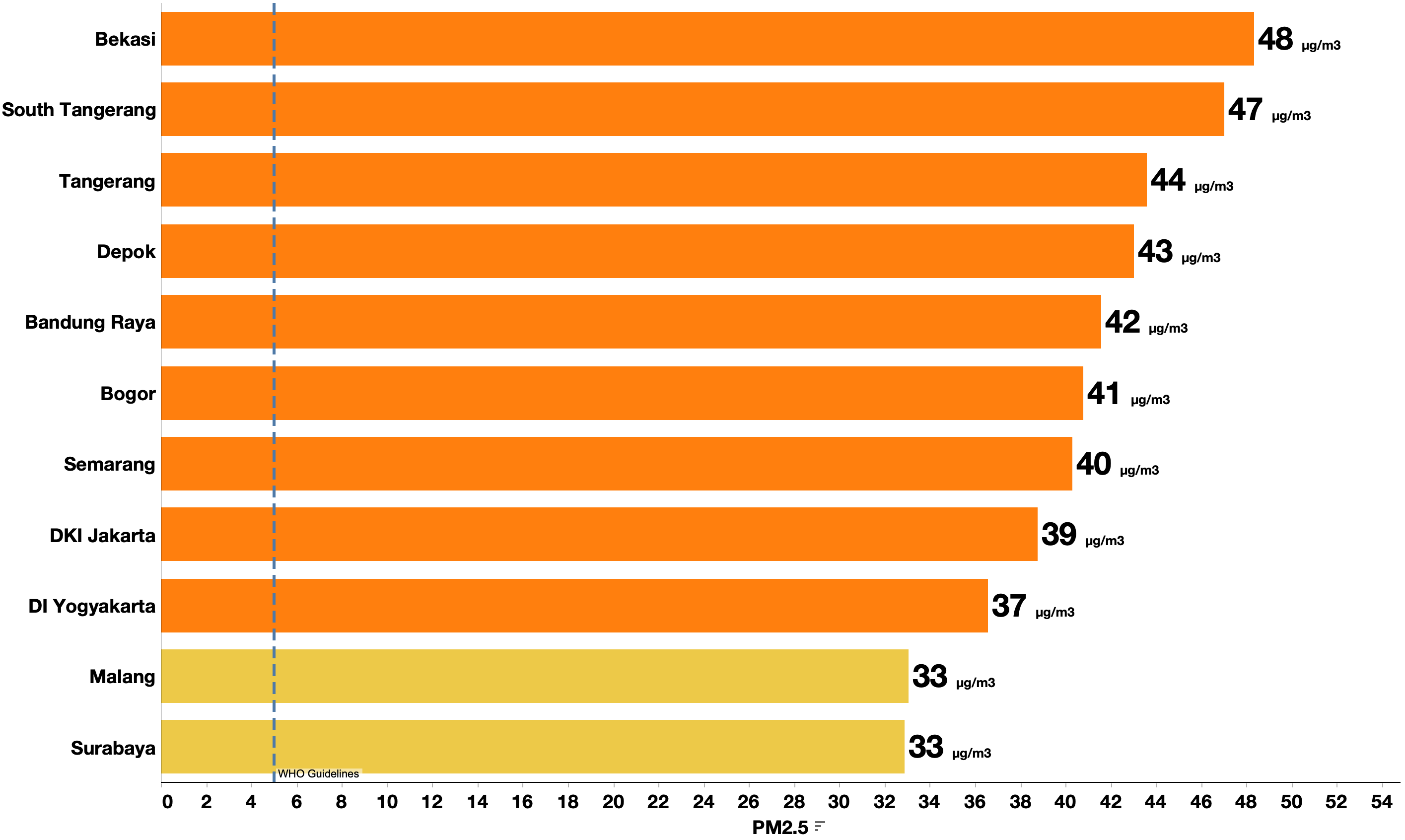Scientists found how never-smokers' exposure to PM2.5 may result in lung cancer
Places with higher levels of air pollution had more lung cancers not caused by smoking.
- Inhaling PM2.5 causes a chemical alarm to be released, causing inflammation and activating cells in the lungs to help repair any damage.
- However, one in every 600,000 cells in a 50-year-old person's lungs already contains a potentially cancerous mutation. These develop with age but appear to be perfectly healthy until they are activated by the chemical alarm and turn cancerous.
We’ve found an intriguing article that shows how exposure to air pollution can lead to the growth and development of cancer cells. This discovery comes from exploring why never-smokers get lung cancer.
Here are the 3 key points we've recapped for you:
1. Air pollution 'does not damage' DNA cells, but 'activates' cells that are already damaged
According to the research, inhaled PM2.5 causes the body to release a chemical alarm in the lungs called interleukin-1-beta. This alarm is expected to help repair any damage to cells. However, when it encounters already damaged cells (as we age), it causes inflammation and activates them into cancer cells.
2. Interleukin-1-beta drugs have been tested in cardiovascular disease and found to reduce the risk of lung cancer
Prof. Charles Swanton, one of the world's leading research experts, called the discovery of how air pollution can trigger cancer a "new era".
Based on these findings, doctors are attempting to develop drugs that prevent the formation of cancer. By testing the drug interleukin-1-beta on mice exposed to PM2.5, the researchers were able to block the alarm signal and prevent cancer from forming. These findings may apply to other cancers linked to air pollution, including mesothelioma and throat and mouth tumors.
3. The real meaning of protecting yourself from air pollution
Lung cancer is a threat not only to smokers but also to never-smokers. Although never-smokers are not directly linked to the harmful chemicals in cigarettes, both never-smokers and smokers are exposed to PM2.5 pollution, which triggers cancer cells. A growing number of studies have found a link between PM2.5 exposure and the risk of lung cancer.
- A study of 5,102,358 cancer inpatients in Brazil found that 33.82% were directly exposed to PM2.5, with an annual mean PM2.5 concentration is 7 μg/m3 for the county with the lowest concentration and 16.8 μg/m3 for the county with the highest concentration.
- According to a significant cohort study on long-term ambient PM2.5 exposure conducted in Canada, there is a 2% increase in the risk of lung cancer for every 5 μg/m3 increase in ambient PM2.5 concentration with the average baseline exposures to PM2.5 were 10.8 μg/m3.
- Another study discovered a 43% increase in the risk of lung cancer for every 10 μg/m3 increase in ambient PM2.5 concentration, with mean ambient PM2.5 concentration was 12.88 μg/m3.
We've learned that the WHO recommends an annual PM2.5 exposure of 5 μg/m3, and studies show that anyone who inhales excessive PM2.5 risks developing lung cancer.
Look back at the air concentrations in those studies: 7 μg/m3, 16.8 μg/m3, 10.8 μg/m3, and 12.88 μg/m3.
And look at the situation in Indonesia!
This is the air quality data measured by the nafas sensor in several cities in Indonesia from August to September 2022.
You can see how high the PM2.5 concentration is in our country, far above the WHO limit and far above the air concentrations in the studies mentioned earlier!
Preventive measures are essential to reduce damage to our body from air pollution, specifically PM2.5 exposure. Through the Nafas app, you can continuously monitor the air quality in your location in real-time. This allows you to make better decisions to spend time outdoors with your family. Aside from that, outdoor air pollution has a significant impact on indoor air quality. Using HEPA filter-based air purifiers to keep the air in our rooms clean and healthy, helps reduce PM2.5 exposure indoors.
Want to learn more about pollution and air quality? Start to learn it from here.